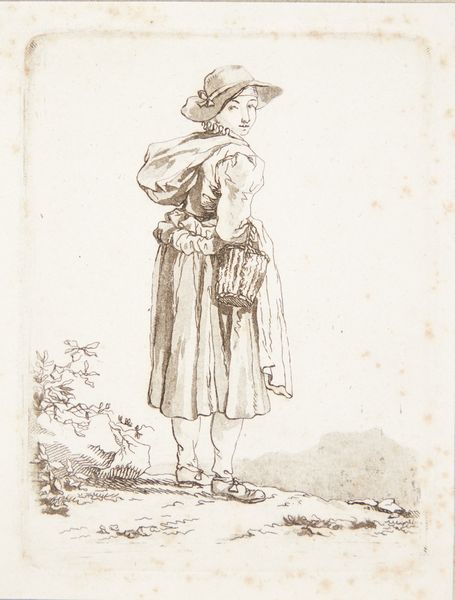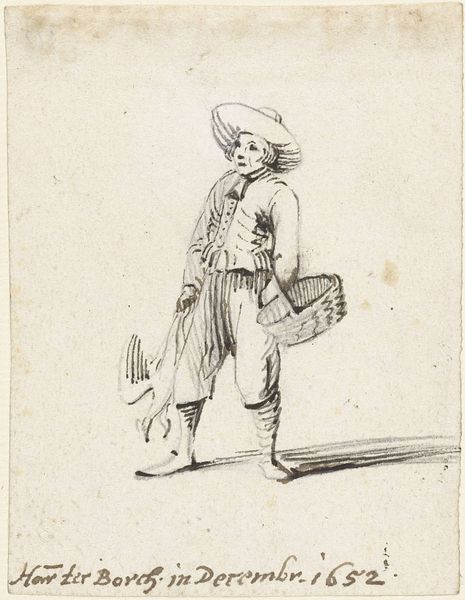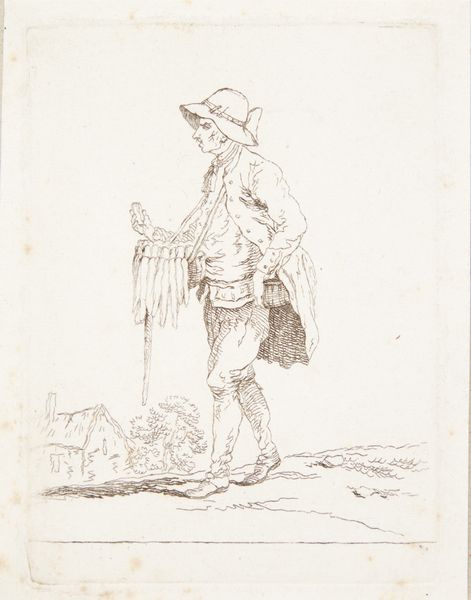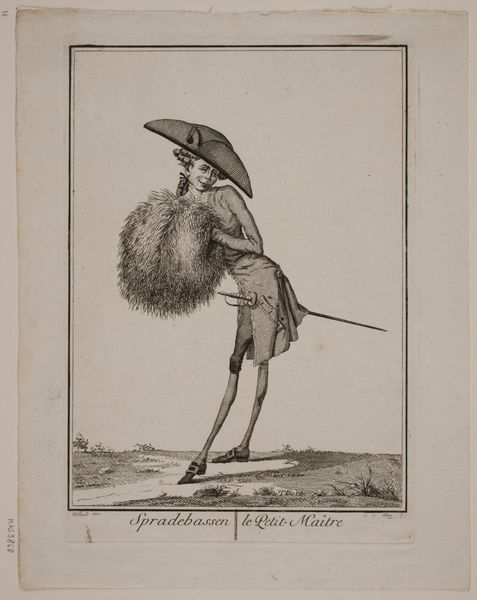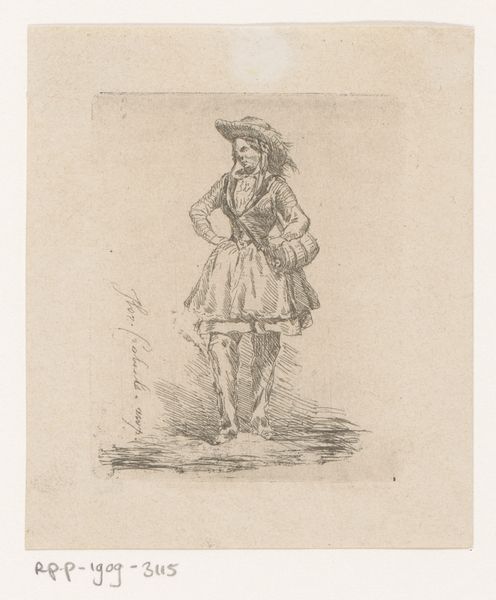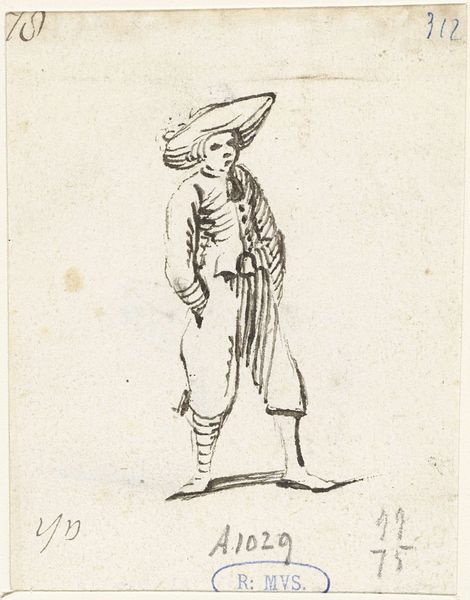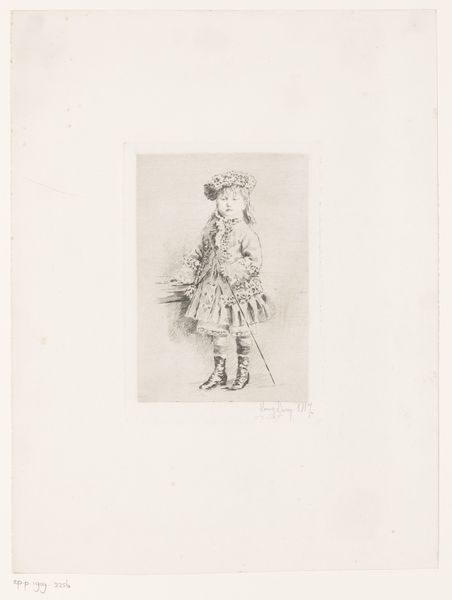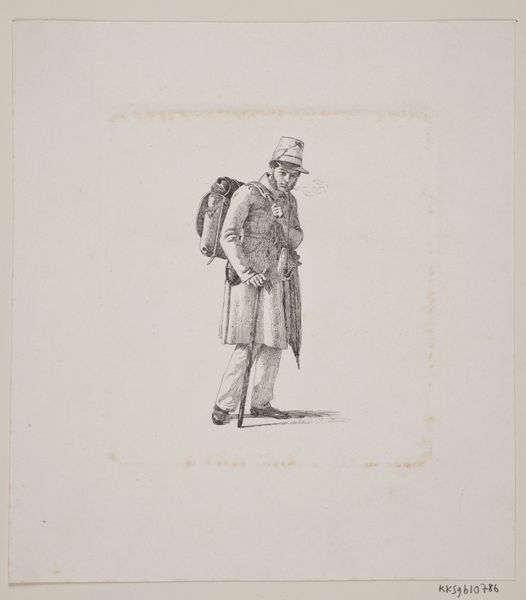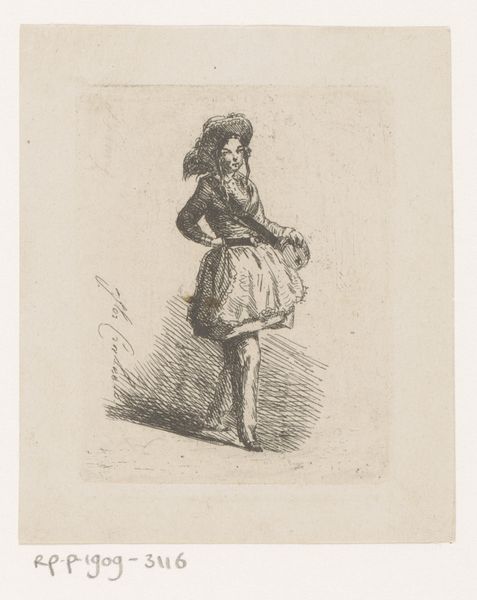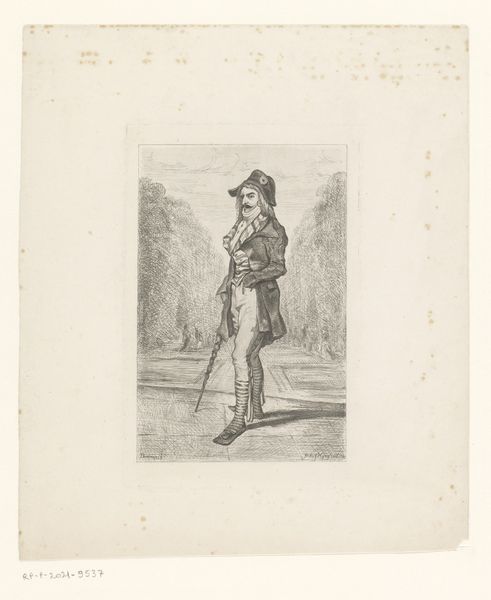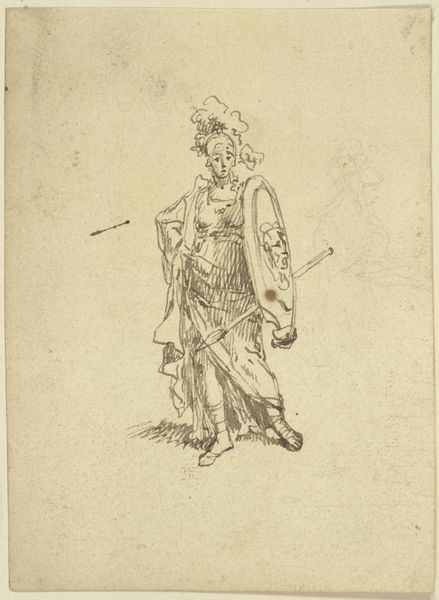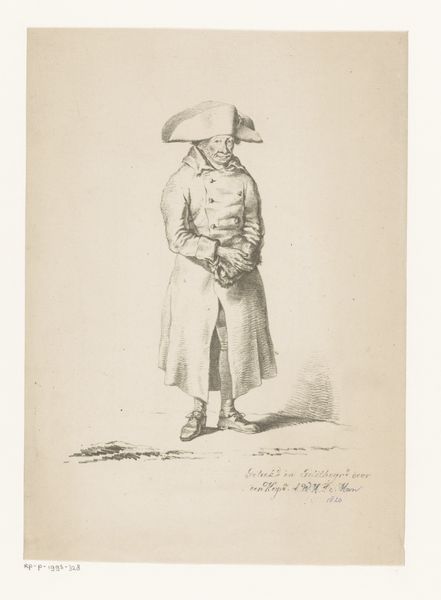
print, engraving
#
portrait
# print
#
romanticism
#
engraving
Dimensions: 87 mm (height) x 54 mm (width) (bladmaal)
Editor: We are looking at "Standing Man" by Meno Haas, sometime between 1752 and 1833. It's an engraving on what appears to be delicate paper. The man looks… burdened, perhaps? What draws your eye when you look at this, our curator's? Curator: I am immediately drawn to the process itself. Look at the precision, the labor invested in creating this image through engraving. Think about the engraver and their tools, the specific materials they are employing: copper plate, inks, the paper you mentioned. It emphasizes the labor inherent to art making and how social status shaped labor during this era. Editor: I hadn’t thought about the physical act of creation. Is the choice of engraving significant in this context? Curator: Absolutely. Engraving allowed for reproducibility, expanding the consumption and reach of images like this one. It democratized portraiture to some degree, although access to these prints was still limited by class. Consider how the “standing man” depicted might have seen it: status wasn’t just performative via clothes, but reproducible for continued admiration through the marketplace. This print is thus, itself, an object of commerce that mirrors themes of display and value, isn't it? How does *that* affect your impression? Editor: That shifts my perspective. I had focused on the romantic loneliness suggested by the composition. But considering it as a commodity… it reframes everything. The romantic elements become a selling point almost. Curator: Exactly! And what does that then *say* about artistic integrity, class division, and the rise of modern media? This print encapsulates that era's negotiations with production, representation, and power. Editor: This has been eye-opening, how shifting the focus to materials and the production process changes the whole story. Curator: Indeed. By examining the material conditions and modes of production, we can uncover the complex social dynamics embedded within seemingly simple portraits.
Comments
No comments
Be the first to comment and join the conversation on the ultimate creative platform.
